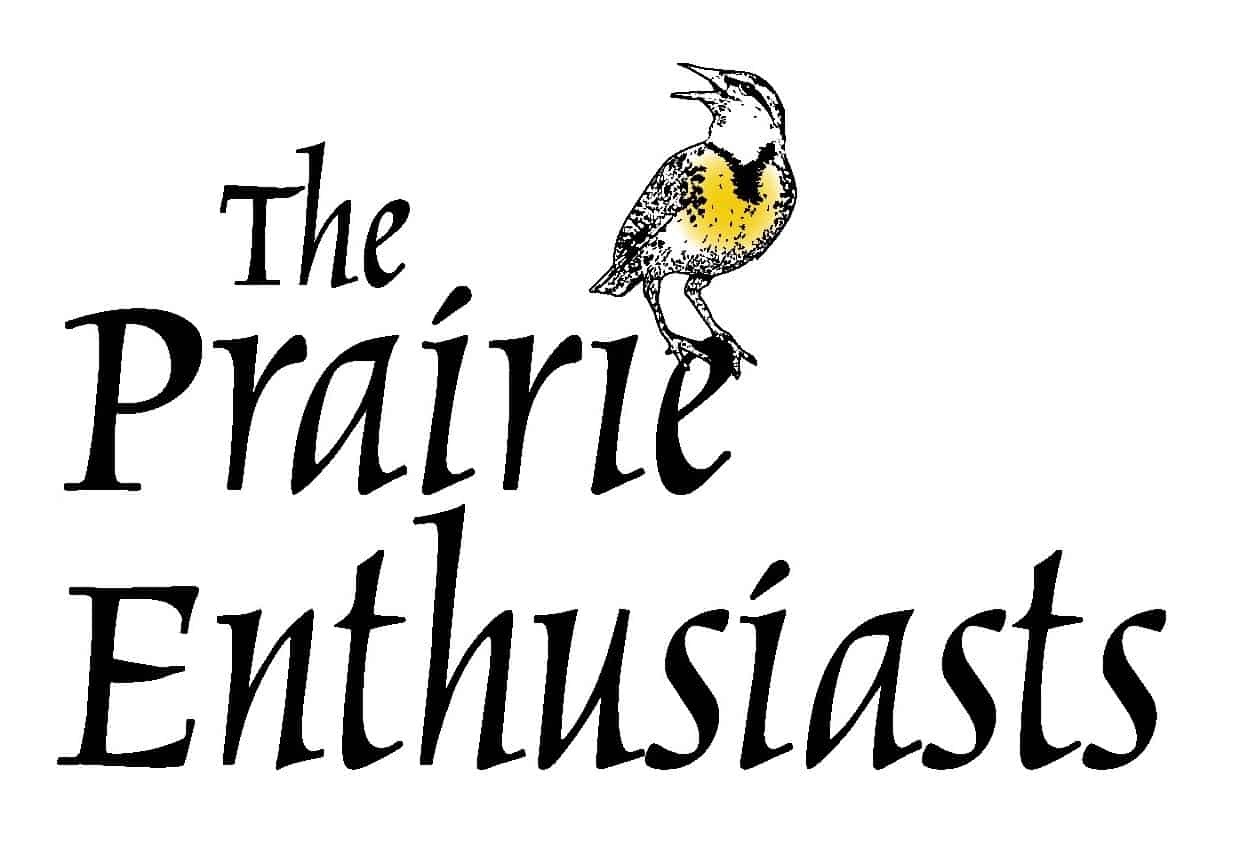
Blue Sky Botany – April
Botanist and early TPE member Rob Baller created this series for our friends at Blue Mounds Area Project. The “blue sky” technique is Rob’s favorite for taking stunning plant photographs. Let him know what you think at robertballer@outlook.com.
ALWAYS get permission from the property owner if you want to try this technique.
Pasqueflower (Anemone patens)
Six pale lavender petals are borne at the top of a 3-6-inch fuzzy stalk. (Botanically, they are 3 petals and 3 sepals, but are nearly indistinguishable.) A ruff of fuzzy segments wraps the stalk below the bloom. As blooms fade, the first true leaves sprout. They are finely cut, a twisted hand of ribbon segments. Seed heads form on the stalks a month later, appearing like dandelion fluff. Pasques are northern cool-weather creatures and disappear from view by June. They grow only on the driest ground, in full sun.
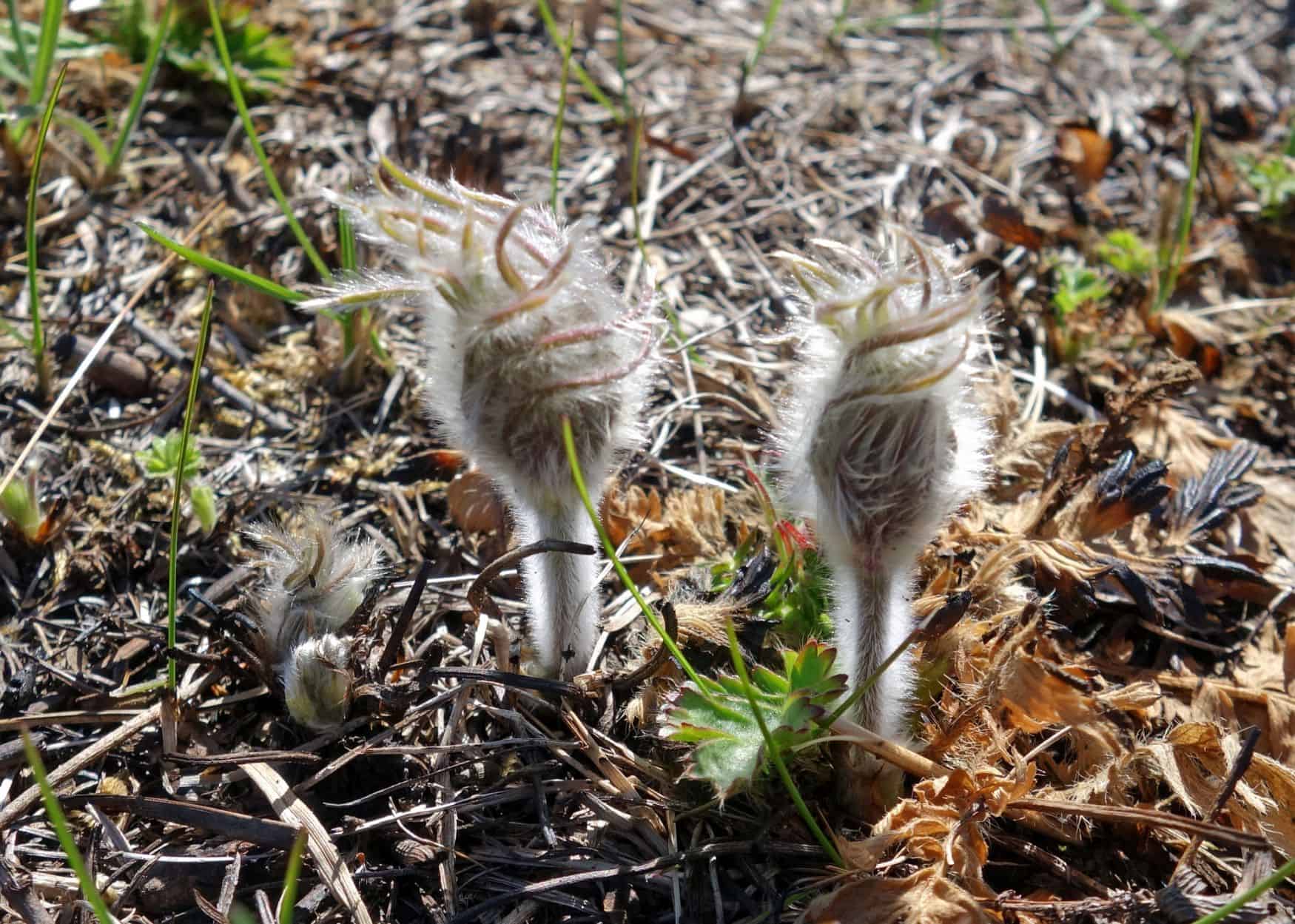 Pasques emerging in April.
Pasques emerging in April.
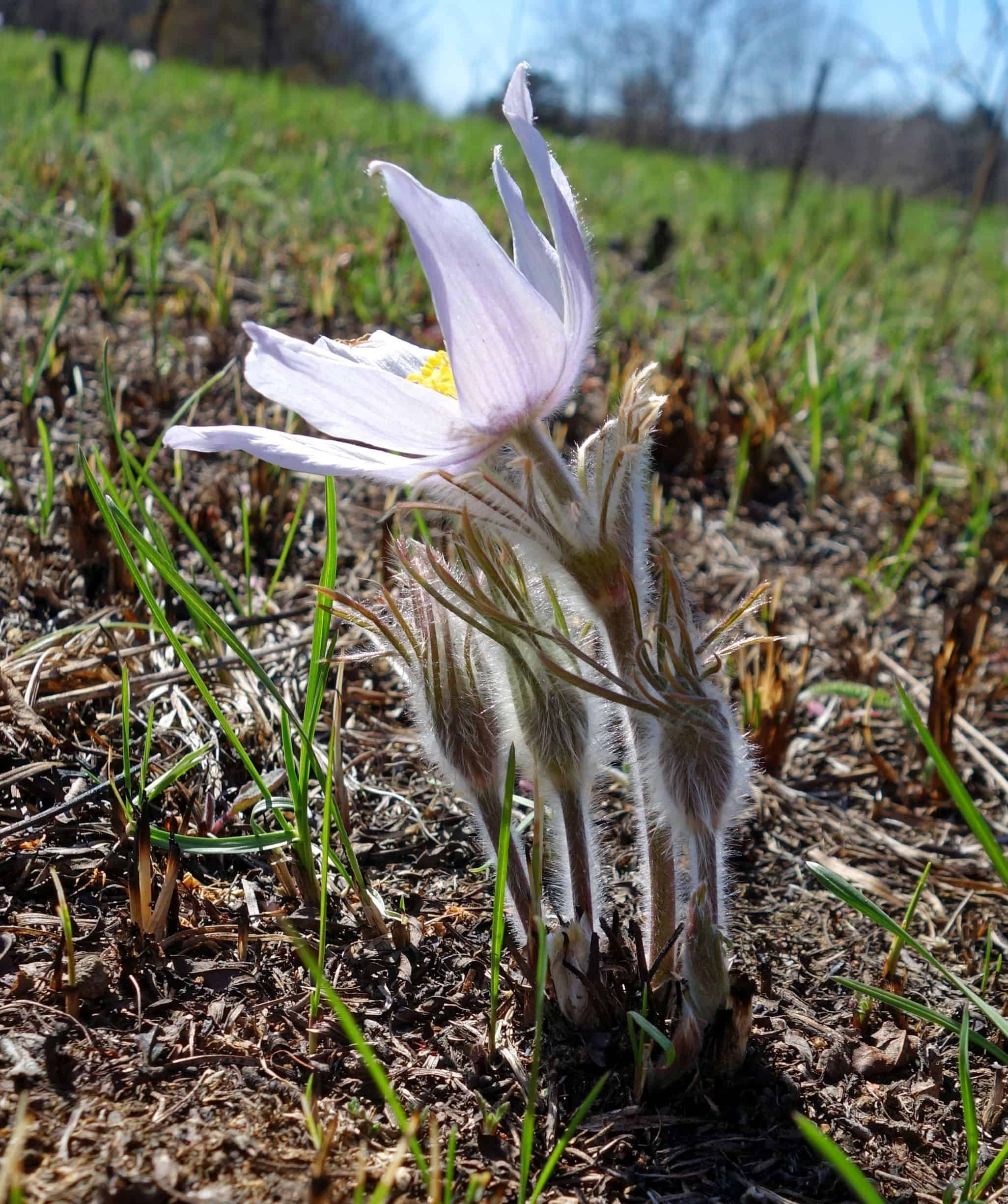 Pasqueflowers in bloom.
Pasqueflowers in bloom.
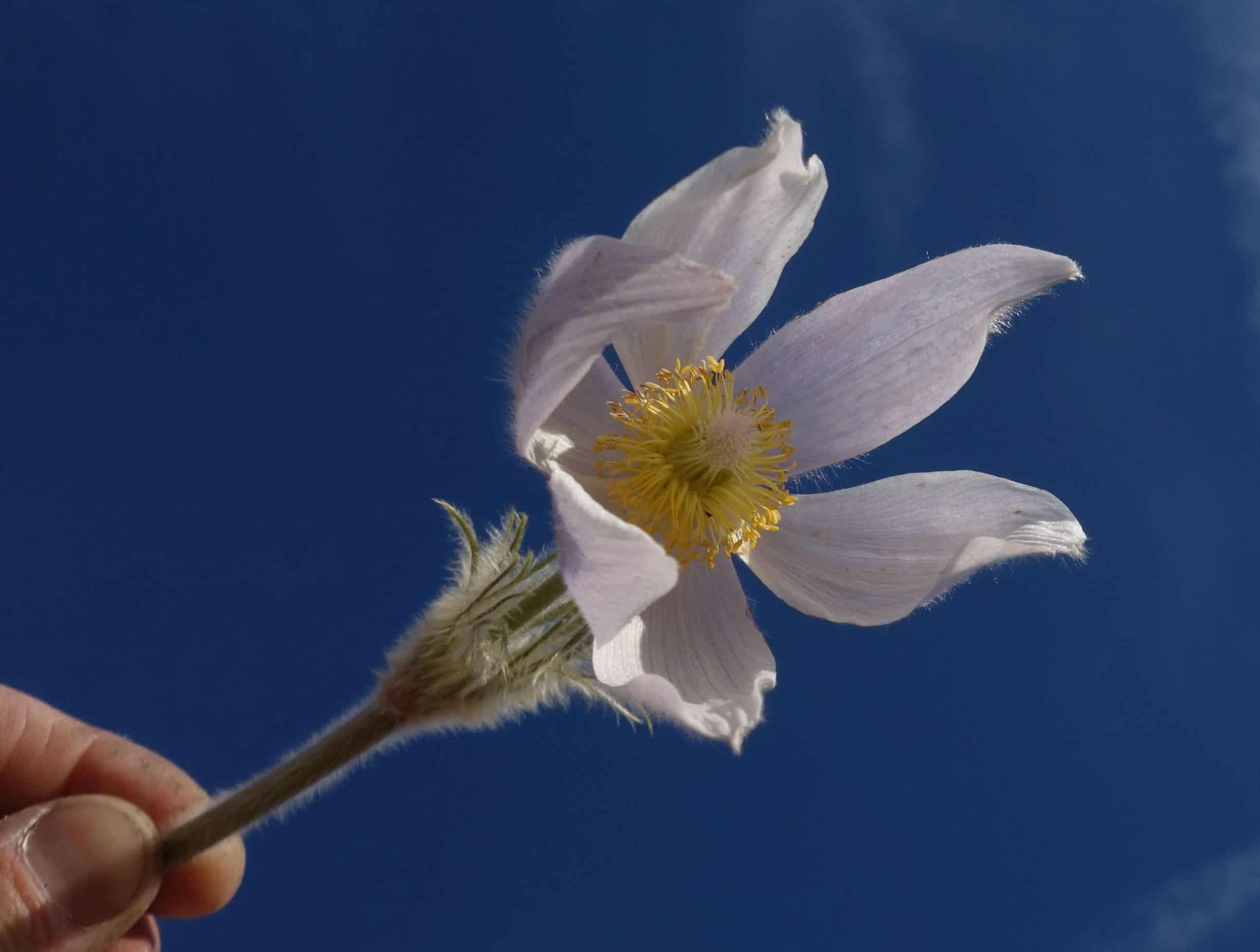
Blue sky pasqueflower and the hand of Rob.
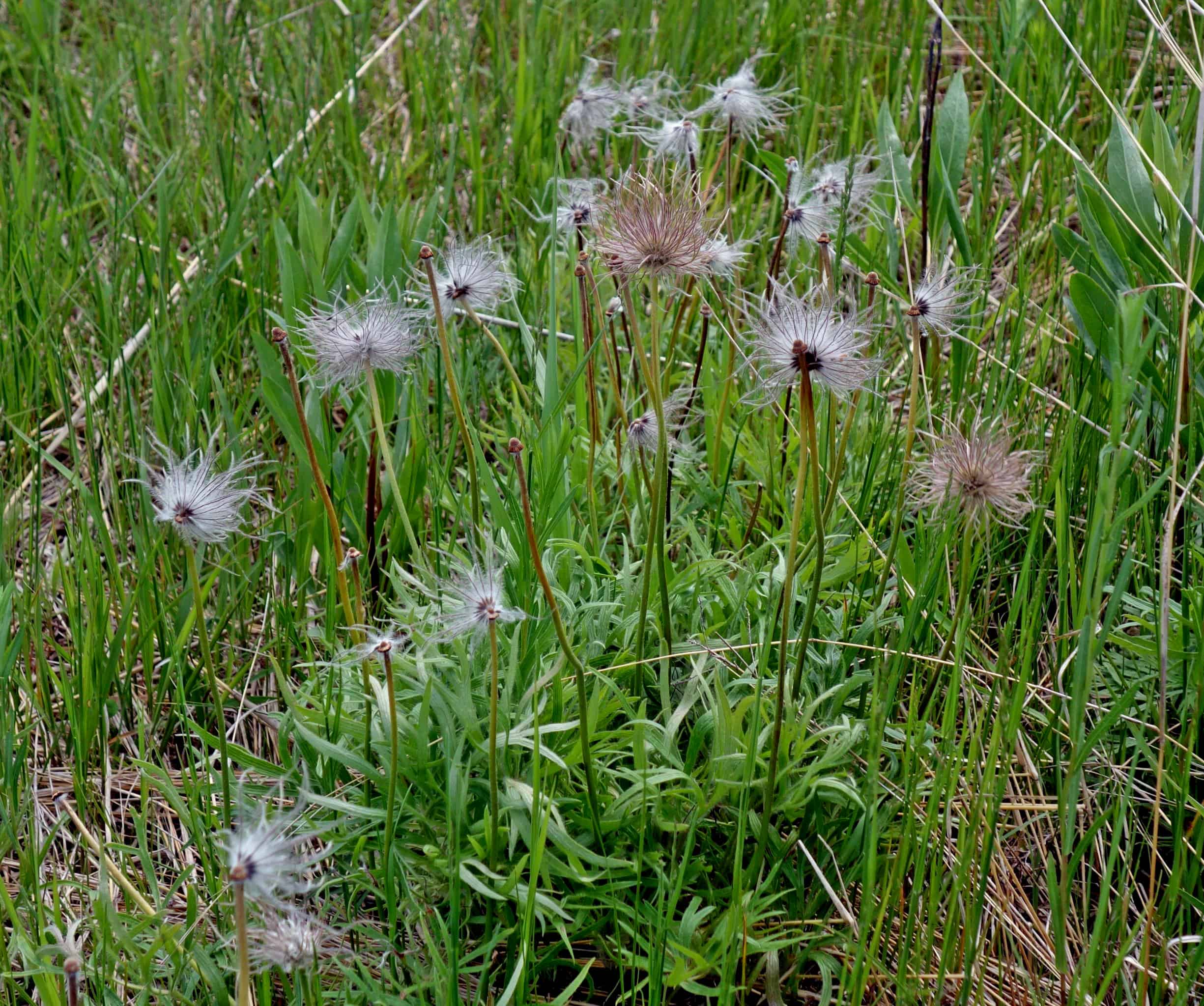
Pasqueflower seed heads.
Buttercup (Ranunculus fascicularis, R. rhomboideus)
Early spring prairies may sport two dainty buttercups. The first is early buttercup (R. fascicularis). It’s common in lightly wooded pastures and lawns. The yellow blooms form a toothy grin of 5-7 well-spaced petals. Plants are ankle high or taller. Leaves are dissected and sprawl in a loose, haphazard rosette surrounding the upright flowering stalks. Seeds form a cluster of scale-like, hooked plates.
The second is prairie buttercup (R. rhomboideus). It’s restricted to dry prairies and is quite uncommon. While it may appear frustratingly similar to early buttercup, the trick is to search for any wide (rhomboidal) leaves near the base. If you find any, you have the rarer species. If you don’t, you may still have the rarer species, just without positive ID.
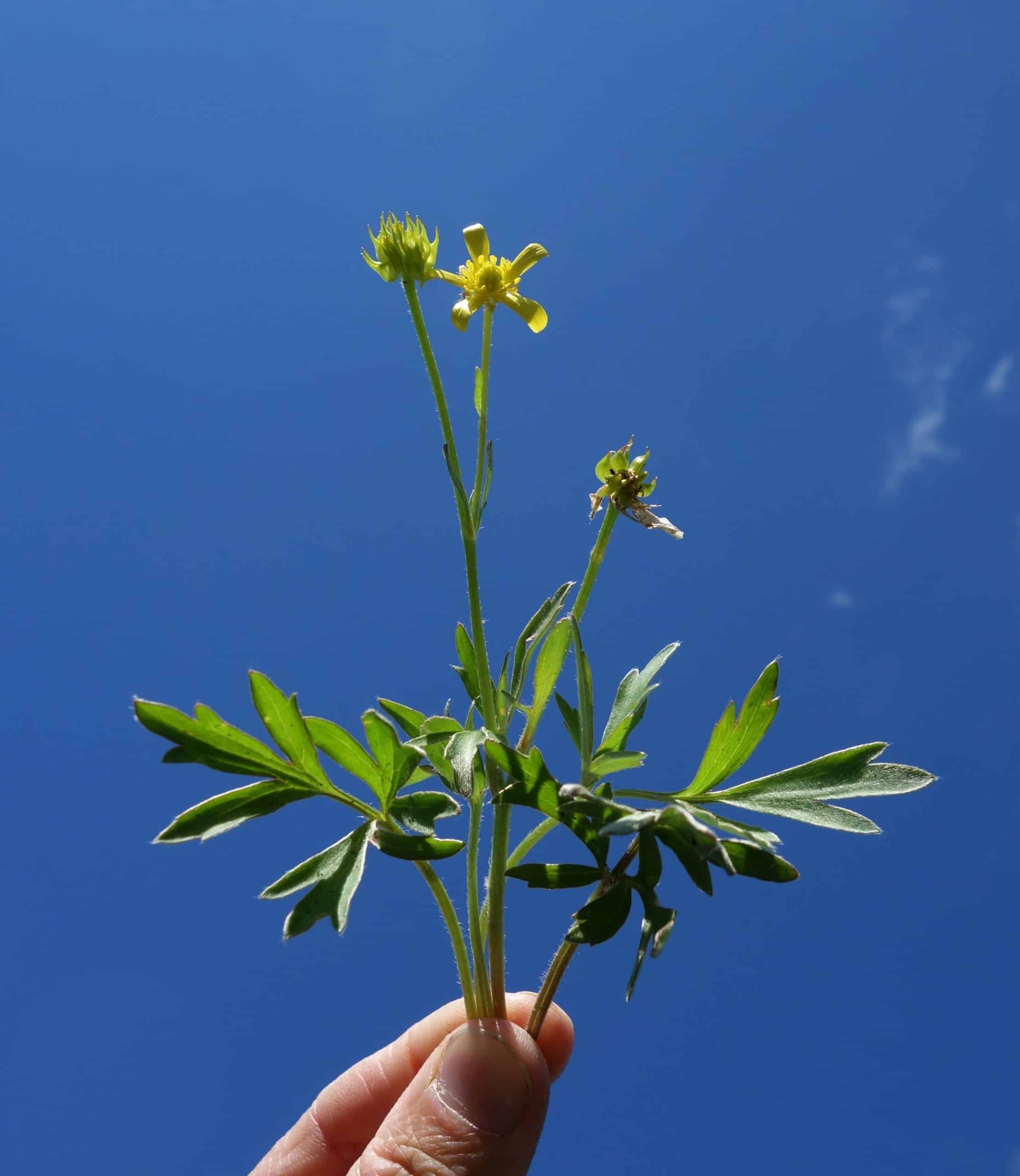 Blue sky early buttercup.
Blue sky early buttercup.
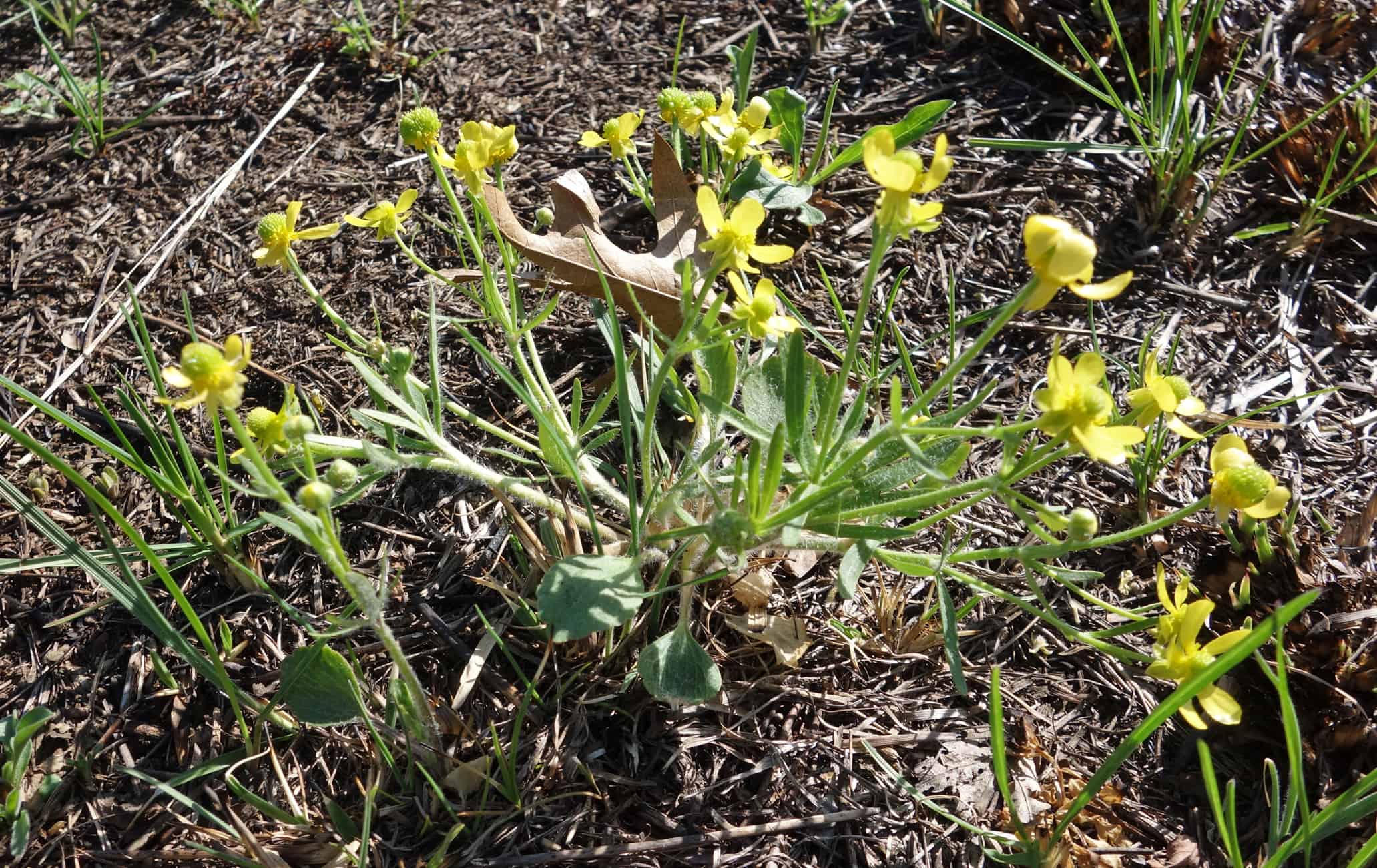
Confirmed R. rhomboideus specimen.
